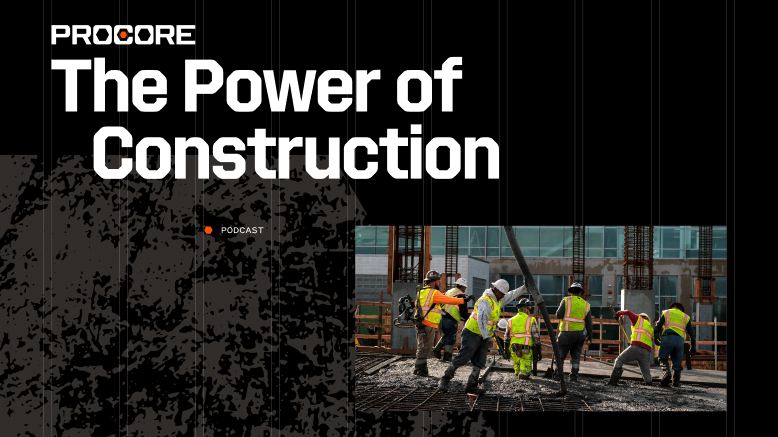— 15 min read
Invitation to Bid (ITB) Explained for Construction


Last Updated Sep 6, 2024

Janine Trinidad
Staff Trainer and Program Manager
25 articles
Janine Trinidad is a Construction Educational professional for Procore Technologies. In previous roles, Janine managed all phases of construction on hotel, mixed-use, and institutional projects in the San Francisco Bay area. She was responsible for negotiating contract budgets and change orders, managing RFIs and submittals, and overseeing quality control, among other duties. She is also a certified transformational coach with a focus on women-centered and trauma-informed methods. She is passionate about transforming the construction industry to be a healthier, more successful and welcoming place to work and believes technology and education are allies in doing so.

Taylor Riso
Contributing Writer
91 articles
Taylor Riso is a marketing professional with more than 10 years of experience in the construction industry. Skilled in content development and marketing strategies, she leverages her diverse experience to help professionals in the built environment. She currently resides in Portland, Oregon.

Robert Miller
Robert Miller is a Senior Strategic Product Consultant with Procore. He has worked in construction as a project manager for a variety of private companies and public agencies, including Cambridge Housing Authority and the City of Boston. Robert lives in Brooklyn, New York.

D. Jesse Mase
Principle Operational Excellence Specialist
10 articles
D. Jesse Mase has a wealth of experience spanning architecture, construction, and real estate investment. His passion for the built environment led him to self-employment as a design builder, and later, managing large-scale commercial construction projects at Trehel Corporation. Currently, Jesse leverages his industry insights in his role as Principal Strategic Product Consultant at Procore, streamlining processes and solutions for construction project owners.
Last Updated Sep 6, 2024

An invitation to bid (ITB) is an official document issued by a project owner that targets contractors to solicit bids for a construction project. The ITB provides all bidders with information about the project including scope, duration, submission guidelines and minimum qualifications. By ensuring that all bidders receive the same details about the project, the ITB promotes fairness and genuine competition throughout the procurement process. This serves as the foundation of the procurement process in the construction industry, acting as the pivotal process through which contractors are selected to undertake and deliver the project at hand.
This article aims to provide a comprehensive understanding of invitations to bid, their role in the construction industry and how they can be effectively utilized by both contractors and project owners. This can be a valuable resource for contractors seeking insights on how to respond to ITBs effectively and project owners looking to draft well-crafted and impactful ITBs.
Table of contents
The Anatomy of an Invitation to Bid
Project owners or their representatives will issue ITBs (also called an invitation for bids, or IFB) to formally invite contractors to submit pricing on a construction project. This type of tendering is most common in the public sector, but it is also used on private projects as well. In order to foster fairness, transparency and competition, ITBs are frequently publicly advertised to ensure broad outreach to a wide pool of potential bidders.
The ITB offers detailed and uniform information to all bidders regarding the project with the aim of soliciting competitive bids. Its purpose is to identify a contractor who can effectively complete the project for a fair price, within the specified timeframe, while adhering to the established quality standards.
While the components of an ITB may vary from project to project. Here are some of the common elements included:
- Project Description: A brief high-level overview of the project
- Scope of Work: A comprehensive breakdown of the work including tasks, deliverables, activities and any special requirements
- Specifications: Detailed technical information about the scope of work — to ensure their bids accurately capture all of the project's technical requirements, the specifications provide bidders with clear guidelines about what is expected in terms of materials, design, dimensions, performance, functionality and other technical considerations
- Drawings: Architectural and engineering drawings, plans or diagrams that illustrate the desired design, layout and system requirements of the work
- Timeline: The proposed timeline for the work, including start and completion dates as well as any significant milestones or deadlines
- Contractual Terms and Conditions: The terms and conditions that will govern the working relationship between the owner and selected contractor including payment terms, insurance requirements, dispute resolution methods and other stipulations
- Submission Guidelines: Instructions to contractors on how to prepare and submit the bid, including deadlines, required format and any specific forms, information or documentation that must be included
- Evaluation Criteria: A breakdown of the factors that will be used to assess bids including compliance with the stated requirements, price, qualifications and past experience, technical expertise and ability to perform the work
ITBs serve as the initial step in the procurement process for construction projects. They are typically the first formal communication from the project owner to the contractor regarding bidding.
A well-crafted ITB is a communication tool through which project owners effectively express and define their project requirements and expectations to potential bidders. ITBs act as an invitation to interested parties to submit their bids, setting the stage for subsequent evaluation and contract awarding processes.
ITBs enable an "apples-to-apples" comparison which allows project owners to effectively evaluate bids and select the most competitive offer that aligns with the project's requirements and budget. This approach ensures the highest quality end product that aligns with the available budget. In the case of public projects, the transparency of open bids allows for public review, fostering accountability and mitigating the risk of corruption or fraud.
Although ITBs are commonly associated with open tendering, they are also utilized in selective tendering, where bids are sought from a select group of contractors, often those with whom the project owner has an established relationship.
Effective Use of ITBs
Effective utilization of ITBs by both owners and contractors is crucial for establishing a transparent and competitive procurement process within construction projects. For owners, ITBs remove bias from the selection process and are crucial to receiving competitive pricing, mitigating risk and selecting qualified contractors.
The structure and clarity of an ITB can impact the bidding process and influence overall cost and quality of a construction project. For contractors, success in pursuing ITBs can directly impact their bottom line and profitability.
For both parties, success in the entire invitation to bid process is dependent on clear communication and clarity on project scope and specifications. This establishes a solid foundation to manage a successful construction project.
Strategies for Project Owners
Below are some strategies project owners can use to maximize the benefits of an invitation to bid:
Identify Contractors Through Market Research
Prior to issuing an ITB, owners typically perform market research to identify potential contractors who possess relevant experience and qualifications. Online platforms like the Procore Construction Network allow owners to search for and filter bidders based on project objectives such as location, trade and market sector.
Prequalify Bidders
Owners often aim to prequalify bidders based on criteria such as financial stability, past performance, technical capabilities and adherence to safety standards. They often send a request for qualifications, or RFQ, to ask for relevant details.
This prequalification process ensures that only competent and reliable contractors are invited to bid, thereby enhancing the likelihood of high-quality bids and successful project execution.
Create Clear Bid Documents
Take the time to ensure that the entire bid package is clear in order to minimize any confusion and potential errors. When minor bid details in the documents are unclear or contradictory, contractors end up dedicating their time to resolving those simple issues instead of concentrating on the actual preparation of the bid proposal.
Write a Detailed Scope of Work
A comprehensive scope of work is key to providing contractors with a comprehensive understanding of the project including timeline, key milestones, objectives, and other specific requirements or constraints. By providing clear and detailed project information, contractors are able to make precise cost and time estimates.
As a result, the bid leveling process is easier, and the chances of overlooking crucial project aspects are minimized. Ultimately, this results in the submission of more accurate and competitive bids.
Establish Clear Project Timelines
Clear timelines and milestones allow contractors to strategically plan their work schedule and allocate resources efficiently. This should also reflect external constraints, like the critical opening of a school under construction or acceptable work hours for an occupied building renovation.
It is crucial for owners to provide a realistic schedule that considers possible delays and unforeseen challenges that may arise during the construction process. This is becoming increasingly important with supply chain disruptions, skilled labor shortages and other volatile market forces.
Define Evaluation Criteria
By clearly indicating which aspects of a bid are of the utmost importance, contractors can align their proposals accordingly. By providing transparency regarding factors such as cost, experience or a specific approach (means and methods), contractors are empowered to customize their submissions more effectively.
This, in turn, leads to the creation of more targeted and high-quality bids.
Transparent Process
Promoting transparency and openness in the bid process encourages increased contractor participation. By clearly communicating the evaluation criteria and their relative weights to bidders and maintaining a consistent methodology for assessing and comparing bids, bias and favoritism can be limited.
It is essential to ensure that the selection decision is solely based on the merits of the proposals. A transparent approach helps foster trust with contractors, assuring them that all bids will be evaluated fairly and impartially. Ultimately, transparency instills confidence in contractors and cultivates their willingness to bid on future opportunities as well.
Grant Sufficient Time for Bid Development
By providing contractors with sufficient time to prepare their bids, it guarantees that they can adequately address all project requirements. This approach not only results in the submission of more thoughtful and competitive proposals but also minimizes the risk of overlooking crucial project elements.
Alternatively, a rushed Bid process runs the risk of an extended contract development process. So any perceived time savings on the front end could cause delays in later stages of construction when quality is compromised during Bidding.
Timely and Responsive Communication
Promptly address any bidder inquiries, clarifications and concerns throughout the entire bidding process. Timely and accurate responses demonstrate professionalism and help maintain a positive relationship and open communication with potential bidders. By addressing any questions, it ensures that contractors have a comprehensive understanding of the project's requirements. This, in turn, enables them to submit accurate and precise bids that align with the project's specifications. Also, it is important to keep all bidders informed of any changes or updates related to the project or the bidding process.
Advertise the ITB Broadly
By utilizing various channels, including print and online platforms, to advertise the ITB, it has the potential to attract a wider and more diverse pool of contractors. This expanded competition often leads to the submission of higher quality and more competitive bids.
Post-Bid Engagement
After the bidding process is complete, engage in constructive discussions with unsuccessful bidders to provide feedback. This gesture demonstrates that their time and effort invested in preparing their bid were appreciated, even though they were not the selected contractor. It increases the likelihood that they will be motivated to participate in future bidding opportunities, as they recognize your commitment to transparency as well as their continued improvement.
Continuous Process Improvement
Conduct a thorough evaluation of the ITB process after the project has been awarded. Solicit feedback from both bidders and internal stakeholders to pinpoint areas that can be improved. Incorporate these lessons learned and best practices into future ITBs to enhance the efficiency and effectiveness of the bidding process.
Strategies for Contractors
Contractors can utilize the following strategies to provide high-quality bids:
Review All ITB Documentation Thoroughly
Thoroughly review all the documents included in the ITB package, including the project description, specifications, drawings and any contractual terms and conditions. Note any specific requirements, deadlines and evaluation criteria outlined in the ITB.
Understand the Project Scope
After reviewing all documents in the ITB, contractors must ensure they have a comprehensive grasp of the project scope as delineated in the ITB and derived from drawings and specifications. This should encompass the requirements, timelines and evaluation criteria, all of which will significantly impact how they tackle bid preparation.
Conduct a Site Visit
If possible, request a site visit to gain firsthand knowledge of the conditions, surroundings and any potential challenges. This can help assess the project more accurately, gain additional insights and tailor the bid accordingly.
Seek Clarification
In case of any clarification questions or uncertainties pertaining to the ITB, contractors should proactively reach out to the project owner or the designated point of contact.
By seeking clarifications using a request for information (RFI) or request for clarification (RFC), contractors demonstrate their commitment to delivering a comprehensive and precise bid and minimize risk of misunderstanding the specifications. Before issuing a request, prospective bidders should review the bid documents to ensure they follow any process requirements.
Specialty Trade Input
By actively seeking input from specialty trade partners, contractors can identify and address potential risks more effectively while tapping into their specialized knowledge and expertise. This proactive approach significantly enhances the quality of the bid, thereby increasing the likelihood of securing the project.
Develop Detailed Cost Estimate
Prepare a comprehensive and accurate cost estimate for the project that aligns with the specifications detailed in the ITB. Break down the costs into different components, such as labor, materials, equipment, subcontractors and overheads. Ensure that your estimate is competitive yet still realistic in order to cover all expenses and generate the desired profit.
Explore Options for Value Engineering
Look for opportunities to propose cost-saving measures or value engineering options without compromising the project's quality or the owner’s goals. This is an opportunity for contractors to differentiate their bid and make it more attractive to the client.
Clearly Articulate Bid Pricing Details
It is crucial to include clear proposal qualifications within the bid documentation and explicitly call out where you might have made assumptions or taken exceptions in pricing. By specifying what is included or excluded from the bid price, potential ambiguities can be avoided in the future.
This ensures that both the bidder and the owner have a shared understanding of the scope of work and any limitations associated with the bid.
Follow Submission Instructions
Contractors should pay close attention to the submission instructions outlined in the ITB. Submit the bid in the required format (either physical or electronic) and address any specific requirements dictated, such as multiple copies or specific file formats. Also ensure that all required documentation specified in the ITB is included, such as licenses, certifications, financial statements, insurance certificates and any requested forms. Failure to provide the requested documents may lead to outright disqualification.
Seek Post-Bid Evaluation and Feedback
Follow up with the owner and request feedback on unsuccessful bids. This demonstrates dedication to delivering high-quality bids for future opportunities and provides an opportunity to gain insights on areas for improvement.
ITB vs. RFP vs. RFQ
When it comes to contractor procurement on construction projects, there are several different avenues available, including the invitation to bid (ITB), request for qualifications (RFQ), and request for proposal (RFP). While all three methods serve the purpose of obtaining competitive offers, they differ in their focus, objectives and the level of detail required from contractors or bidders.
| ITB | RFP | RFQ | |
| Definition | An Invitation to Bid (ITB) is a formal solicitation extended by a project owner (or their representative) to contractors to submit a bid or price for a specific construction project. | A Request for Proposal (RFP) is a document issued by a project owner (typically a business, organization or government agency) to invite potential contractors or vendors to submit proposals for a specific project or scope. | A Request for Qualifications (RFQ) is a solicitation document used by project owners or organizations to prequalify contractors or vendors based on their qualifications, experience and capabilities. |
| Purpose | The primary objective of an ITB is to solicit competitive bids and to select the lowest responsible bidder. Or, in other words, the contractor with the lowest price who can also comply with the schedule and regulatory requirements. | The goal of an RFP is to obtain detailed solutions and proposals that address the project's specific challenges, allowing the owner to evaluate and compare different proposals based on a range of factors such as technical capabilities, price, experience and approach to the work. | The RFQ is used to create a shortlist of a select group of prequalified bidders who will later be invited to participate in the subsequent bidding or proposal stage. The focus is on evaluating the qualifications and capabilities of the bidders rather than detailed cost or pricing. |
| Selection | The contractor selected is often the lowest bidder. The project owner selects the most competitive bid that also meets the specified project requirements. | Proposals are evaluated based on a range of factors (usually outlined in the RFP) including proposed approach, price, contractor's qualifications and technical expertise. RFPs focus on selecting the best value. | Qualifications are evaluated to determine if the contractors meet the predefined criteria including experience, references, capabilities, financial stability, insurance requirements and other information. Pricing information is not evaluated. |
The Future of Bidding in Construction
The bidding process in construction continues to evolve as it adapts to changing industry practices, advancements in technology and the call for more efficient and transparent processes.
With the digitization of the industry and the infiltration of technology, ITBs have transitioned from traditional paper-based documents to easily accessible digital formats. Project owners, including organizations and government agencies, now use online software platforms or electronic procurement systems to issue and evaluate ITBs as well as manage the bidding process. This shift has streamlined communication, improved accessibility for contractors and reduced administrative burdens.
Contractors can leverage digital bid management tools to centralize communication, facilitate document sharing and support the prequalification of bidders for subcontractor bidding. These software platforms seamlessly integrate with broader construction management systems, enabling bid information to flow smoothly into project management processes. As a result, this enhances efficiency, communication, bid management and transparency, ultimately leading to more effective and collaborative project execution.
Looking ahead, the use of emerging technologies holds great potential for further enhancing transparency, trust and competition in the bidding process.
Blockchain technology presents a promising opportunity to transform procurement and the construction industry, offering a secure and verifiable transaction history. By incorporating blockchain into the bidding process, a transparent and immutable ledger of bid-related activities can be established. This would greatly reduce the likelihood of disputes and misunderstandings, as the transaction history serves as a clear and indisputable record of all interactions. The use of blockchain could instill confidence in contractors and project owners, as the information is securely stored and easily auditable. As blockchain technology continues to advance, it holds the potential to revolutionize the construction industry by promoting transparency, efficiency and trust throughout the bidding and subsequent project execution phases.
Was this article helpful?
Thank you for your submission.
96%
4%
You voted that this article was . Was this a mistake? If so, change your vote
Scroll less, learn more about construction.
Subscribe to The Blueprint, Procore’s construction newsletter, to get content from industry experts delivered straight to your inbox.
By clicking this button, you agree to our Privacy Notice and Terms of Service.
Thank you!
You’re signed up to receive The Blueprint newsletter from Procore. You can unsubscribe at any time.
Categories:
Written by

Janine Trinidad
Staff Trainer and Program Manager | Procore Technologies
25 articles
Janine Trinidad is a Construction Educational professional for Procore Technologies. In previous roles, Janine managed all phases of construction on hotel, mixed-use, and institutional projects in the San Francisco Bay area. She was responsible for negotiating contract budgets and change orders, managing RFIs and submittals, and overseeing quality control, among other duties. She is also a certified transformational coach with a focus on women-centered and trauma-informed methods. She is passionate about transforming the construction industry to be a healthier, more successful and welcoming place to work and believes technology and education are allies in doing so.
View profile
Taylor Riso
Contributing Writer
91 articles
Taylor Riso is a marketing professional with more than 10 years of experience in the construction industry. Skilled in content development and marketing strategies, she leverages her diverse experience to help professionals in the built environment. She currently resides in Portland, Oregon.
View profileReviewed by

Robert Miller
Robert Miller is a Senior Strategic Product Consultant with Procore. He has worked in construction as a project manager for a variety of private companies and public agencies, including Cambridge Housing Authority and the City of Boston. Robert lives in Brooklyn, New York.
View profile
D. Jesse Mase
Principle Operational Excellence Specialist | Procore Technologies
10 articles
D. Jesse Mase has a wealth of experience spanning architecture, construction, and real estate investment. His passion for the built environment led him to self-employment as a design builder, and later, managing large-scale commercial construction projects at Trehel Corporation. Currently, Jesse leverages his industry insights in his role as Principal Strategic Product Consultant at Procore, streamlining processes and solutions for construction project owners.
View profileExplore more helpful resources

What Happens When Data Drives the Business?
Construction has long been seen as a low-margin industry. But what if the real problem isn’t the margins—it’s how decisions get made? In episode 17 of The Power of Construction,...

Vet Contractors with Confidence: A Guide to Smart Bidder Selection
Selecting the right bidder is one of the most consequential decisions a construction team makes — yet it often happens under tight deadlines, with limited visibility into the long-term implications....

The Construction Bid Interview & Follow-up: Closing the Deal
During construction project bidding, the interview is often the last part of the request for proposal (RFP) process and one of the most influential. For teams that advance to the...
Construction Business Development: Tracking and Winning the Right Opportunities
Construction business development isn’t just a response to deadlines: It’s a long-term strategy rooted in focus, visibility and timing. Delays, funding gaps and market pressure have made it harder to...
Free Tools
Calculators
Use our calculators to estimate the cost of construction materials for your next project.
Templates
Find a template to help you with your construction project tasks.
Material Price Tracker
Get the latest U.S. retail prices and view historical trends for common building materials.
Glossary
Explore key terms and phrases used in the industry.
